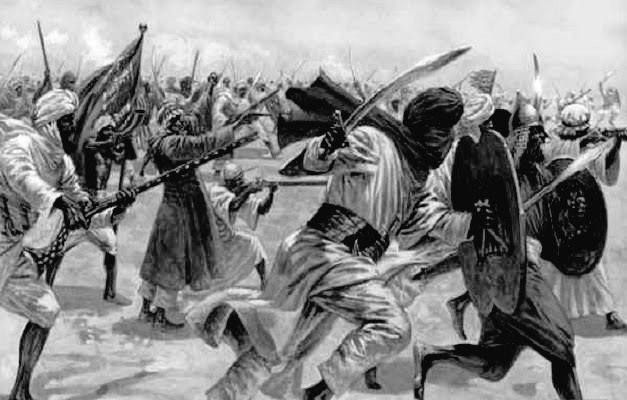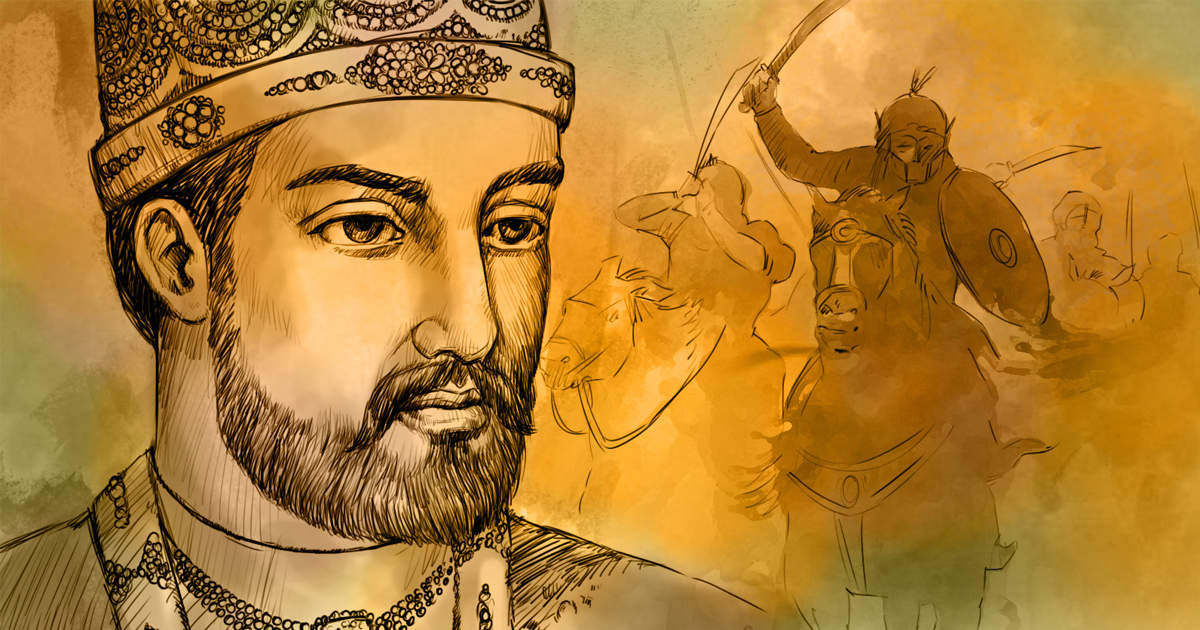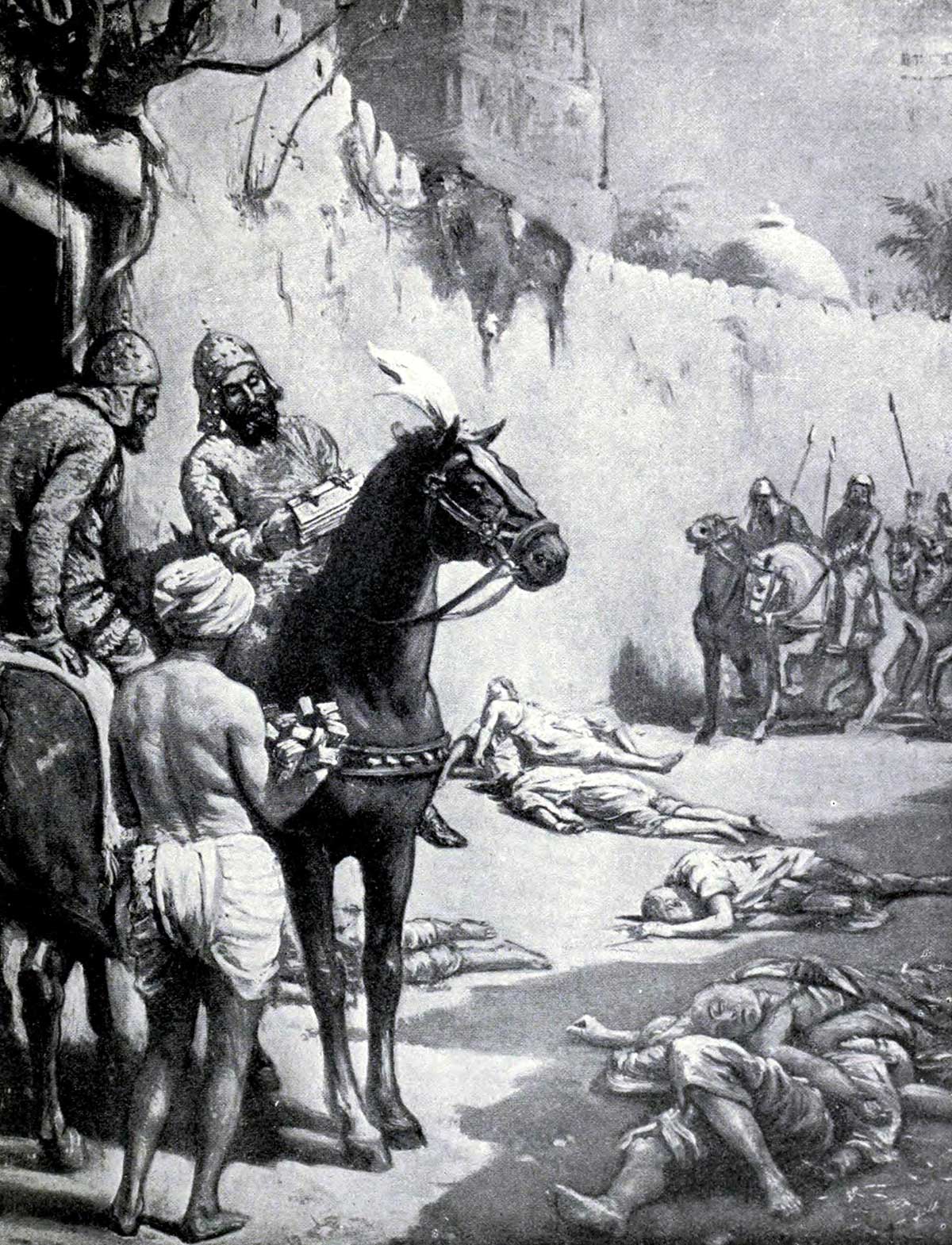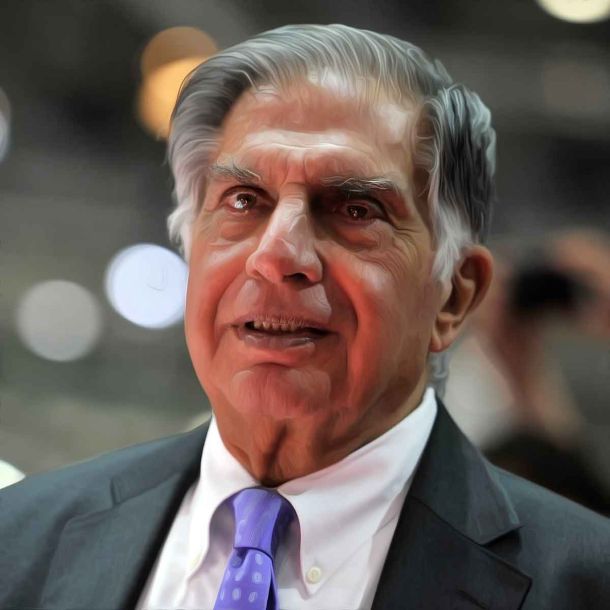More Coverage
Twitter Coverage
Satyaagrah
Written on
Satyaagrah
Written on
Satyaagrah
Written on
Satyaagrah
Written on
Satyaagrah
Written on
Join Satyaagrah Social Media
Assam King Prithu who badly defeated Bakhtiyar Khilji, destroyer of Nalanda University in Battle of Kamrup in 1206 CE

The antiquity of Assam dates back to several thousand years. Assam finds mention as ‘Pragjyotishpur’ in the Ramayana, Mahabharata, Puranas and other ancient Indian scriptures. Later, the kingdom was named ‘Kamrupa’, which also finds mention in several scriptures. Nidhanpur and Doobi inscriptions talk about the kings of the dynasty of Naraka, Bhagadatta and Vajradatta and their descendants, who ruled for 3000 years. The Allahabad inscription of Samudragupta mentions Kamrupa as a frontier territory.
There is another connotation to the naming of this northeastern kingdom of Bharat as Kamrupa. Assam is home to the Peacock Island, a small hillock in the middle of the Brahmaputra River. It is the world’s smallest inhabited river island. According to legend, it was at this hillock that Kamdev interrupted Mahadev’s meditation. Mahadev burnt Kamdev to ashes. The hillock is also, thus, known as Bhasmacala. The Umananda Temple, built during the 17th century by the then Ahom king Gadadhar Singha, is located at Peacock Island.
 |
Following Ahom rule, the area to the east of the Manas came to be known as Assam. Kamrupa, today, is a district in Assam. Muhammad bin Bakhtiyar Khilji invaded Kamrupa in 1206 CE. He attacked with a huge army of 12,000 horsemen. Prithu, who was then the king of Kamrupa, badly defeated Khilji. The Turkish general lost all of his army except a few in this battle. Khilji, who became a completely sick man in the Assam expedition after being badly defeated, somehow managed to save his life with the help of a local tribal chieftain and escaped out of Kamrupa.
13th century Persian historian Minhaj-i-Siraj in his book Tabaqat-i Nasiri recorded many of Bakhtiyar Khilji’s battlefield exploits, loot, and plunder in India. Tabaqat-i Nasiri contains a detailed account of Khilji’s attack of Kamrupa and his defeat. An inscription near Guwahati, dating back to this period, records the utter rout of the ‘Turkish’ or Muslim army in Kamrupa. This implies that Khilji penetrated to the interior regions of Kamrupa. Historian Edward Albert Gait in his book History of Assam writes that during Bakhtiyar Khilji’s attack of Assam, ‘the ruler of Kamrupa bore the title Kameswar, and his western boundary was the Karatoya River’.
 |
Bakhtiyar Khilji was the first Islamic invader who attacked Kamrupa. Khilji was assigned two villages on the border of Bihar which had become a political no-man’s land. Later, he began a series of successful plundering raids in Bihar. He was recognized and rewarded for his raids by his superiors. It was then that Khilji destroyed the ancient Nalanda University and set fire to the library that accommodated several million manuscripts! It was the year 1193 CE. Tabaqat-i Nasiri mentions how thousands of monks were burnt alive and thousands beheaded as Khilji tried his best to plant Islam by the sword. The book also mentions about the burning of the library that continued for several months and ‘smoke from the burning manuscripts hung for days like a dark pall over the low hills.’ He also destroyed the ancient Vikramshila University and burnt its library to ashes. Khilji started looting and plundering more kingdoms until he set on an expedition to Kamrupa towards the end of 1205 CE with an army of 12,000 horsemen. He actually set out to conquer Tibet besides attacking and plundering kingdoms on the way. His defeat of Lakshman Sena, the last Sena King of Bengal, further boosted his confidence to conquer more regions around and beyond the Himalayas.
Devkot (modem Gangarampur), ten miles south of Dinajpur, was the starting point for Bakhtiyar Khilji to attack Kamrupa. Few miles ahead of the border of Kamrupa, he succeeded in converting a local Mech chieftain to Islam. The convert took a new name ‘Ali, the Mej’. Ali and his followers guided Khilji in the expedition. Following his guidance, Khilji and his army entered the city of Burdhankot, in the east of Bengal. Ali marched along with the Turkish army for 10 days until they reached a giant stone bridge over a channel of river Barnadi in Hajo near Kamrupa. (Currently this ancient stone bridge is stranded in the middle of a small lake as Barnadi River changed its course over time).
 |
Tabaqat-i Nasiri mentions that at this place where the giant stone bridge is located, Khilji’s army ‘built a bridge of hewn stone consisting of upwards, of twenty arches. Before Khilji proceeded further, he entrusted two of his commanders along with a troop to keep guard of the bridge until he returned. After few more days of marching amid the hilly terrains and treacherous jungles, Khilji and his army reached the kingdom of Kamrupa, an open tract of land that was densely populated. There was a strong fort in the middle of the villages. Khilji’s army immediately set to action — loot and plundering of the villages.
Kamrupa was then ruled by king Prithu from a dynasty that drew their lineage from Narakasura. They worshipped Kamatashwari, a form of Goddess Durga. Kanai Varasi rock inscription records the destruction of the Turks who invaded Kamrupa in 1206 CE.
Koch Rajbongshi, Bodo and Keot tribes also resided in the region and surrounding areas. Knowing the gravity of the situation, the three tribes extended their support to Prithu. The combined Kamrupi forces attacked Khilji’s army. Such was the valor of the tribal army that many Turkish soldiers were killed. Khilji’s army could not advance further. Many of Khilji’s soldiers were taken prisoners.
The first day of the first battle ended with a huge loss for Khilji. The battle was to resume the next day. Meanwhile, Khilji learnt that king Prithu would attack them with a larger army reinforced by a well- trained cavalry force from the neighboring city of Karampattan. The Turkish chieftain could foresee defeat. He thus broke up his camp the same night and began to retrace his steps.
|
But king Prithu attacked the Turkish Muslim army on the road. A fierce fight followed. Khilji lost more of his army. Many of his soldiers were captured. Khilji somehow managed to escape with few hundred soldiers until they reached the stone bridge. To their utter dismay, they found the middle arch of it broken off by the natives. With the Kamrupi forces behind, Khilji and his army were forced to swim to reach the other end of the river. The strong current of the river led hundreds of the Mohammedan soldiers to their watery grave. Only Khilji and few men could survive the disaster. At the other end of the river, the converted Ali and his tribe helped the now sick and discomfited Khilji reach Bengal.
After the failed Assam expedition, Khilji became a completely sick man. He could lead no further expeditions or plunders and loots. While he was lying ill at Devkot (Bengal), he was assassinated by Ali Mardan, a general, who then became the ruler of Bengal.
|
What happened to the prisoners of war in Kamrupa? Hundreds of Khilji’s soldiers were captured by Prithu in battle. The imprisoned soldiers sought pardon and shelter. The kind king Prithu pardoned them,set them free, and made arrangements for their settlement. This was part of the rule of Dharma that Hindu kings followed in warfare and while dealing with prisoners of war. He gave them all essential commodities for a living. As they came from Gauda (Bengal), the king christened them as Gaudia. This marked the beginning of Islamic settlements in Assam.
References:
myindiamyglory.com - Manoshi Sinha
Corpus Incriptionum Indicarum, Vol.UI, PP.14
Ibid
Early History of Kamrupa, K. L. Barua, PP. 9, Gauhati -1966
The Comprehensive History o f Assam, Vol. II, H.K. Barpujari, PP. 37, Gauhati – 1992
Acharyya, N. N. (1966), The History of Medieval Assam (From the 13th to the 17th century), Guwahati
Saffron Swords: Centuries of Indic Resistance to Invaders - Manoshi Sinha Rawal, Yogaditya Singh Rawal
 Support Us
Support Us
Satyagraha was born from the heart of our land, with an undying aim to unveil the true essence of Bharat. It seeks to illuminate the hidden tales of our valiant freedom fighters and the rich chronicles that haven't yet sung their complete melody in the mainstream.
While platforms like NDTV and 'The Wire' effortlessly garner funds under the banner of safeguarding democracy, we at Satyagraha walk a different path. Our strength and resonance come from you. In this journey to weave a stronger Bharat, every little contribution amplifies our voice. Let's come together, contribute as you can, and champion the true spirit of our nation.
 |  |  |
| ICICI Bank of Satyaagrah | Razorpay Bank of Satyaagrah | PayPal Bank of Satyaagrah - For International Payments |
If all above doesn't work, then try the LINK below:
Please share the article on other platforms
DISCLAIMER: The author is solely responsible for the views expressed in this article. The author carries the responsibility for citing and/or licensing of images utilized within the text. The website also frequently uses non-commercial images for representational purposes only in line with the article. We are not responsible for the authenticity of such images. If some images have a copyright issue, we request the person/entity to contact us at This email address is being protected from spambots. You need JavaScript enabled to view it. and we will take the necessary actions to resolve the issue.
Related Articles
- Hero of Pawankhind: Veer Maratha Bajiprabhu Deshpande, who led 300 Soldiers against 12000 Adilshahi Army defending Shivaji
- Taimur was attacked and defeated by 20 year old Rampyari Gurjar and her army of 40,000 women
- Dangers of losing our identity: Guru Tegh Bahadur forgotten and Aurangzeb being glorified
- How Chhatrapati Shivaji Maharaj was establishing Hindu Samrajya by concluding centuries of Islamic oppression - Historian GB Mehandale destroys secular propaganda against Hindu Samrajya Divas
- If only India’s partition chilling wound was not enough, Gandhi did his last protest again only to blackmail India into giving 55 crores to Pakistan, dragged Hindu, Sikh refugees seeking shelter in mosques to die in cold: And we call him Mahatma, not for
- Winston Churchill's hate for Indians caused millions of deaths: A villainous supremacist
- Valiant Marathas and the far-reaching effects of the loss of 3rd battle of Panipat: Jihad of the temple destruction
- How Britishers were challenged by 83 year old Ropuiliani in Mizoram in 1892-’93
- On 16th Aug 1946, during Ramzan's 18th day, Direct Action Day aimed to provoke Muslims by mirroring Prophet Muhammad's victory at Badr, Gopal 'Patha', the Lion of Bengal, heroically saved Bengali Hindus & Calcutta from a planned genocide, altering history
- Jhalkaribai: The Indian Rebellion Of 1857 Who Took on British Forces Disguised as Laxmibai
- Unsung Heroine Pritilata Waddedar, Who Shook The British Raj at the age of 21
- Busting the myth of “glories” of the Mughal Empire and its economic superiority as fantasized by Indian Marxist and Liberal historians
- Prophecies of Jogendra Nath Mandal getting real after seventy years of his return from Pakistan
- Father of the Nation! Absolutely not. Mohandas Karamchand Gandhi was not the father of the nation either officially or otherwise
- Our first true war of independence lie forgotten within the fog of time and tomes of propaganda: Sanyasi Rebellion, when "renouncers of the material world" lead peasants in revolt against British and fundamentalist islamic clans
























